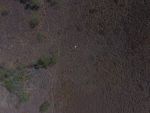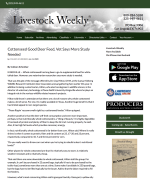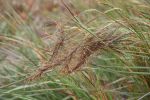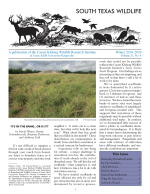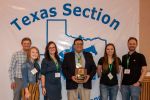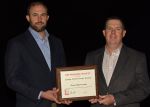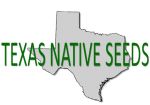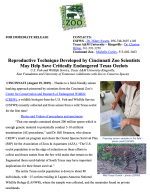
All News
WESTMINSTER, Colorado - MAY 29, 2020 - Scientists writing for the journal Invasive Plant Science and Management say several exotic grass species once grown in South Texas for livestock forage and erosion control have expanded from the areas where they were planted and have become invasive. They now are reducing the region's biodiversity and the habitats available for wildlife.
KINGSVILLE — Whole cottonseed has long been a go-to supplemental feed for
white-tailed deer. However, one veterinarian researcher says more study is needed.
That was the gist of the message offered by Dr. Clay Hilton, DVM, at the Caesar Kleberg
Wildlife Research Institute’s Deer Associates annual gathering here earlier this year. In
addition to being a veterinarian, Hilton, who also has degrees in wildlife science, is the
director of veterinary technology at Texas A&M University-Kingsville where he plays an
Landowners and CKWRI scientists have been using research findings (see article below) to develop burning, spraying, and grazing regimes that reduce seed production and keep Tanglehead seeds buried by limiting soil disturbance. These practices show promise in reducing Tanglehead populations.
Click here to read it now!
Our age has become one of escalating warnings and anxieties about many things, but the biggest of all is climate crisis. Young people the world over are crying out for a reckoning of previous generations’ knowing destruction of the natural world.
Although the modern environmental movement has been widespread and successful in many ways, it has not kept pace with the ongoing industrial growth and urbanization of the planet.
The Texas Section Society for Range Management (TSSRM) hosted its annual meeting in Kerrville, Texas on October 9-11, 2019. The TSSRM Annual Meeting serves as the primary source of income to support scholarships, student contests, symposiums, field tours, publications, and professional meetings.
Congratulations to Texas Native Seeds for receiving the Group Achievement Award from The Wildlife Society at the 2019 Annual Conference in Reno, Nevada! The Group Achievement Award recognizes an organization’s outstanding wildlife achievement that is consistent with and/or assists in advancing the objectives of The Wildlife Society.
AUSTIN, Texas & RIVERBY, Texas--(BUSINESS WIRE)--The Texas Native Seeds Program is filling a crucial gap in its statewide coverage by adding the Bois d’Arc Lake Mitigation Area in Fannin County as a research site for comparative testing of native grass varieties. The three-year study will identify the best locally-adapted grasses and forbs to use for native plant restoration projects in the area, and will immediately benefit the mitigation site itself.
Sept. 3, 2019 (Kingsville, TX) - The Caesar Kleberg Wildlife Research Institute (CKWRI) at Texas A&M University-Kingsville announced today, a landmark $2 million gift in support of its Texas Native Seeds Program (TNS). The anonymous gift will create an endowment to support operations of TNS across Texas to develop locally adapted native seed supplies for commercial production and to conduct applied habitat restoration research.
CINCINNATI (August 19, 2019) – Thanks to a field-friendly semen banking approach pioneered by scientists from the Cincinnati Zoo’s Center for Conservation and Research of Endangered Wildlife (CREW), a wildlife biologist from the U.S. Fish and Wildlife Service (USFWS) recently collected and froze semen from a wild Texas ocelot for the first time!
